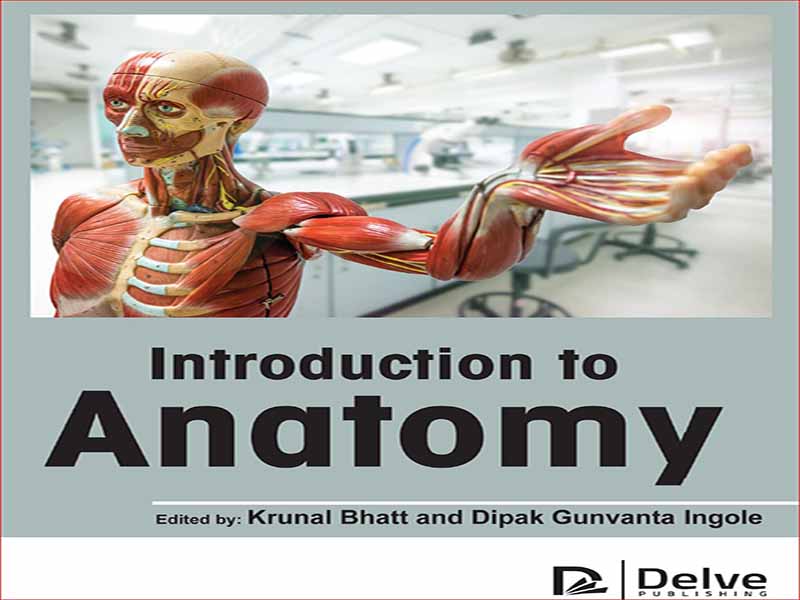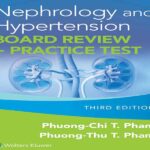- عنوان کتاب: Introduction to Anatomy
- نویسنده: Krunal Bhatt and Dipak Gunvanta Ingole
- حوزه: آناتومی
- سال انتشار: 2023
- تعداد صفحه: 268
- زبان اصلی: انگلیسی
- نوع فایل: pdf
- حجم فایل: 35.0 مگابایت
این کتاب خوانندگان را با مفهوم اصلی آناتومی آشنا می کند. این مرور کلی، تاریخچه مرتبط و انواع مختلف آناتومی را روشن می کند. علاوه بر این، این کتاب همچنین بر علوم گیاهی و آناتومی آن به همراه ابزارهای فعلی فناوری اطلاعات و ارتباطات مورد استفاده در آموزش و همچنین یادگیری آناتومی تأکید دارد. فصل اول به خوانندگان مروری بر آناتومی و تاریخچه آن می دهد. انواع آناتومی و تأثیر آنها بر پزشکی نیز در پایان این فصل مورد بحث قرار گرفته است. فصل دوم خوانندگان را به آناتومی انسان میبرد. این دانش در مورد آناتومی گری، فرهنگ تشریح، چهره انسانی آناتومی، و ابعاد اخلاقی و آینده آناتومی را ارائه می دهد. در پایان، این فصل در مورد فن آوری های نوآورانه مورد استفاده در آموزش پزشکی و مهم ترین حوزه مطالعه – آناتومی مغز انسان صحبت می کند. پس از آن، فصل سوم آناتومی قلب را برای الکتروفیزیولوژیست توضیح میدهد که شامل مروری بر آناتومی قلب است. همچنین، در مورد ویژگی های تشریحی، بیولوژیکی و جراحی عقده های پایه صحبت می کند. بعداً جنین شناسی و آناتومی مغز میانی مورد بحث قرار می گیرد تا بینش روشنی به خواننده بدهد. فصل چهارم بینش هایی را در مورد آناتومی تولید مثل مردان، از جمله مؤلفه اساسی دستگاه تناسلی مردانه به همراه عملکرد آنها ارائه می دهد. همچنین روابط موقعیتی بین اندام های تناسلی نر در حشرات را توضیح می دهد. اپی ژنتیک در باروری مردان نیز در ادامه این فصل مورد بحث قرار گرفته است. سپس فصل پنجم خوانندگان را با علوم گیاهی – ساختار، آناتومی و فیزیولوژی که شامل انواع آبکش و سلولی، پارانشیم، آناتومی و رشد ریشه، تشکیل ریشه و غیره می باشد، آشنا می کند. همچنین فصل به مفاهیم مربوط به گیاهان دارویی می پردازد. قطعات، کاربردها و اکولوژی آنها. فصل ششم آناتومی و فیزیولوژی دامپزشکی را روشن می کند. در مورد تاریخچه آناتومی و فیزیولوژی دامپزشکی و فناوری های مختلف تصویربرداری که در آناتومی و فیزیولوژی استفاده می شود صحبت می کند. علاوه بر این، این فصل همچنین درباره آناتومی، بافت شناسی و فیزیولوژی سم اسب سالم و لنگ و نقش دامپزشکان در رفاه حیوانات و ارزیابی رفتاری تا پایان بحث میکند. در فصل آخر این کتاب، روندهای جاری در آموزش و یادگیری آناتومی مورد بحث قرار گرفته است که در آن آغاز آناتومی و الگوی تدریس کلاسیک به همراه چند مدل پایه برای آموزش و یادگیری آناتومی انسان توضیح داده شده است. روندهای فناوری در آموزش آناتومی نیز ارائه شده است. در پایان این فصل، برخی چالش ها و فرصت ها در آموزش آناتومی توضیح داده شده است.
This book introduces the readers to the basic concept of anatomy. It sheds light on the overview, related history and different types of anatomy. In addition, this book also emphasizes on plant science and its anatomy along with the current ICT tools used in teaching as well as learning anatomy. The first chapter gives the readers an overview of anatomy and its history. Types of anatomy and their impact on medicine have also been discussed towards the end of this chapter. The second chapter takes the readers through the human anatomy. It will provide knowledge about gray’s anatomy, the culture of dissection, the humanistic face of anatomy, and ethical and future dimensions of anatomy. Towards the end, this chapter talks about innovative technologies being used in medical education and the most important area of study-human brain anatomy. After that, the third chapter explains the cardiac anatomy for the electrophysiologist that includes an overview of heart anatomy. Also, it talks about anatomical, biological, and surgical features of basal ganglia. Later, midbrain embryology and anatomy are discussed to give a clear insight to the reader. The fourth chapter provides insights on male reproductive anatomy, including the fundamental component of the male reproductive system along with their functions. It also explains the positional relationships among male reproductive organs in insects. Epigenetics in male fertility has also been discussed later in the chapter. Then the fifth chapter introduces the readers to plant science – structure, anatomy, and physiology which comprise phloem and cell types, parenchyma, anatomy and root development, formation of roots, etc. Also, the chapter deals with the concepts related to medicinal plants, their parts, uses and ecology. The sixth chapter sheds light on veterinary anatomy and physiology. It talks about the history of veterinary anatomy and physiology, and different imaging technologies that are being used in anatomy and physiology. In addition, the chapter also discusses the anatomy, histology and physiology of the healthy and lame equine hoof and veterinarians’ role in animal welfare and behavioral assessment towards the end. In the last chapter of this book, current trends in teaching and learning anatomy are discussed, in which the beginnings of anatomy and the classic teaching model are explained, along with some basic models for teaching and learning human anatomy. Technological trends in anatomy education are also given. Towards the end of this chapter, some challenges and opportunities in anatomy teaching are explained.
این کتاب را میتوانید از لینک زیر بصورت رایگان دانلود کنید:
Download: Introduction to Anatomy



































نظرات کاربران